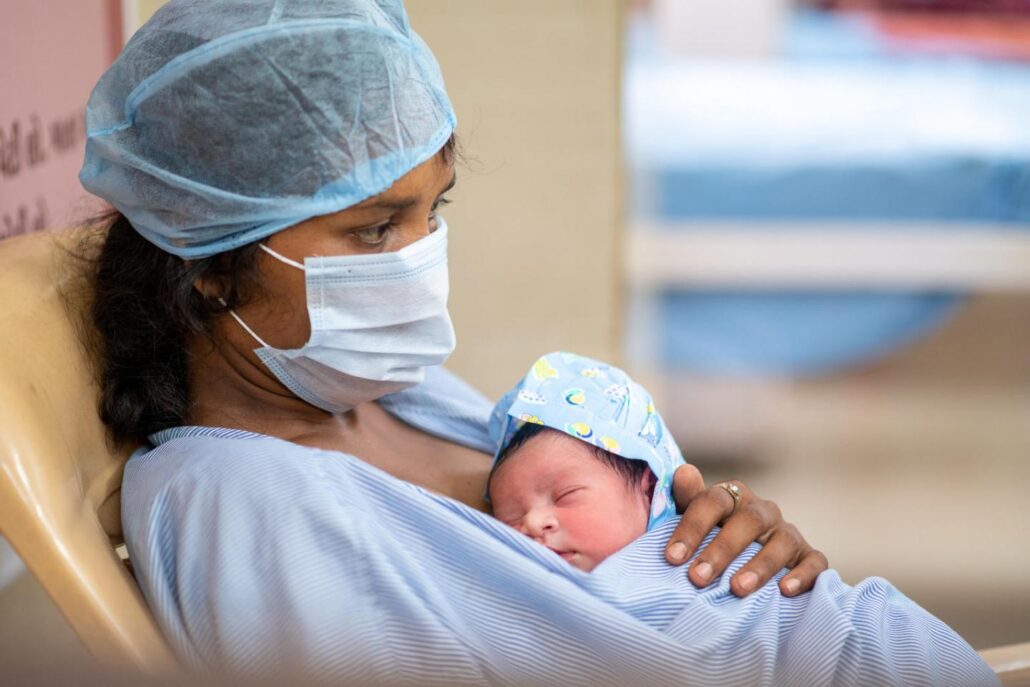
’86 percent deaths reported in tertiary care hospitals, eclampsia, post-partum hemorrhage most common causes of deaths’
Majority of maternal deaths in Jammu and Kashmir are reported during post-natal period with over 85 percent death reported at tertiary health care facilities alone.
A retrospective study based on review of field data was conducted Saleem Ur Rehman Director General of Health Services, J&K, Asif Jeelani Senior Resident, Department of Community Medicine, Government Medical College, Srinagar and Dr M Salim Khan, Professor and Head, Department of Community Medicine, GMC Srinagar to estimate maternal mortality ratio (MMR) for J&K and describe the epidemiological characteristics of maternal deaths.
A doctor told news agency—Kashmir News Observer (KNO), that the data regarding maternal deaths and live birth were collected from April 2020 to March 2021. Data for maternal deaths were analysed for epidemiological parameters and MMR and lifetime risk were calculated using standard formulas.
He said the resilience of the health care system in any area is gauged by the quality of care it provides to vulnerable sections of the society.
Although pregnancy and childbirth are normal physiological processes, some pregnancies put the mother and child at risk for disability and death, he said, adding that the death of a woman due to pregnancy-related causes is a very unfortunate event.
Maternal deaths invariably happen in young females and if the child survives, he/she has a high chance of not fulfilling his/her potential in life, he said, adding that almost all maternal deaths are considered to be preventable, provided complications are identified and proper management is done for all cases.
Maternal Mortality ratio (MMR) , defined as the number of maternal deaths out of 1 lakh deliveries, is the most commonly used indicator.
From 2000 to 2017, the global maternal mortality ratio declined by 38 per cent – from 342 deaths to 211 deaths per 100,000 live births, according to UN inter-agency estimates, the official said.
India has seen a decrease in MMR and the current MMR of India is 103 as per the latest report from Sample Registration System (SRS), he said.
He added that SRS provides national level estimates and estimates for large states of India.
The MMR ranges from 205 (Assam) to 30 for Kerala and SRS does not provide estimates for J&K due to large sample size requirements and to address this data gap, a study was recently conducted by the health department to estimate maternal deaths from April 2020 to March 2021, he said.
The study was conducted across all the districts of J&K.
It translated to an MMR of 46 for J&K. The mean age at death was 28.6 years ± 5.57. Primigravidae constituted 41.8% of deaths and most deaths (72.5%) had happened in postnatal period and most of the deaths (78/91) which is around 86 percent had happened at tertiary level healthcare facilities with two facilities (LD Hospital, Srinagar & SMGS Hospital Jammu) reporting (52/91) of the deaths and deaths during transit contributed to 5% of total deaths, he added.
It is pertinent to mention that these two hospitals cater to the highest footfall in the respective division of Kashmir and Jammu.
Eclampsia and post-partum haemorrhage were the most common causes of death and contributed to around 50% of deaths, he said.
The study puts the MMR of J&K to be comparable with the southern Indian States, which traditionally have a better public health system.
He said that officials who have conducted this study have also highlighted the need to strengthen the routine maternal and child deaths surveillance system in J&K.
Pertinently maternal death is defined as “The death of a woman while pregnant, or within 42 days of termination of pregnancy, irrespective of the duration, and the site of the pregnancy, from any cause related to or aggravated by the pregnancy or its management (from direct or indirect obstetric death), but not from accidental or incidental causes.”—(KNO)
